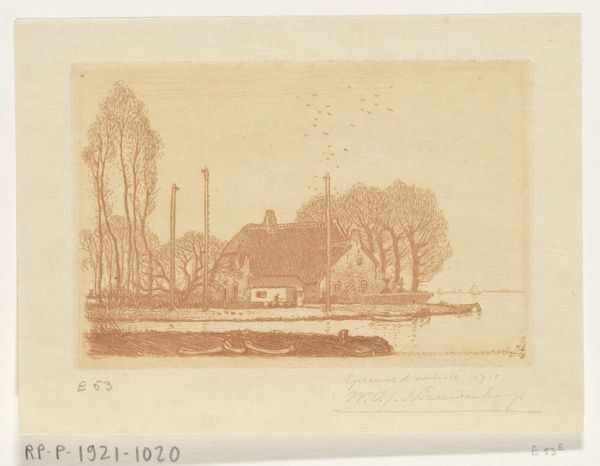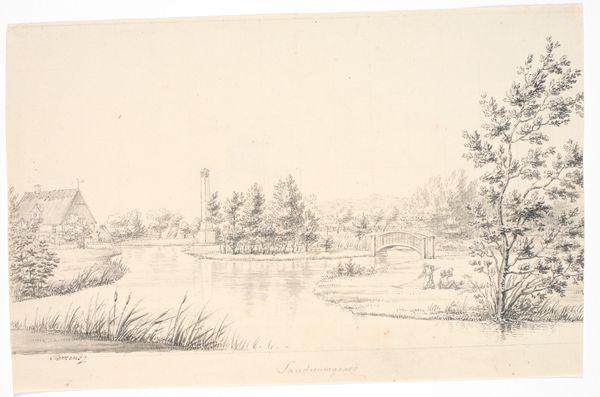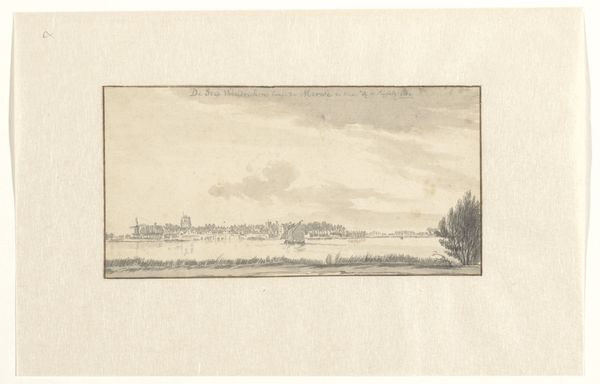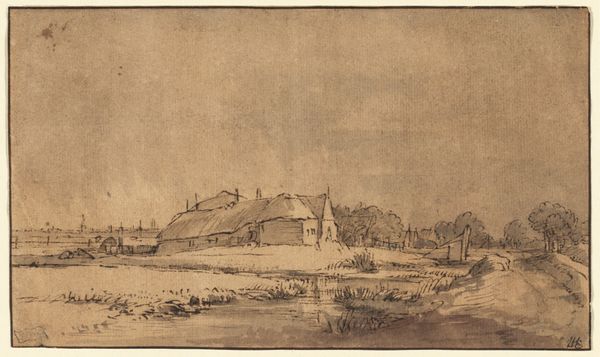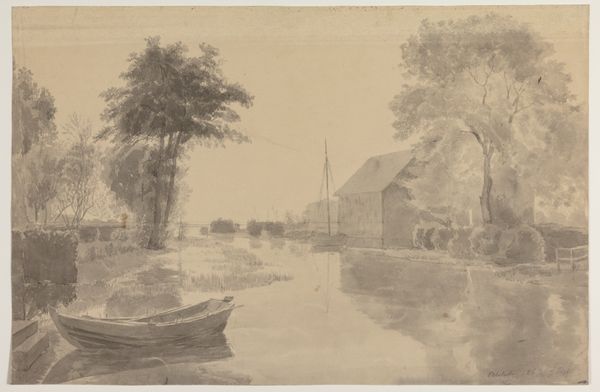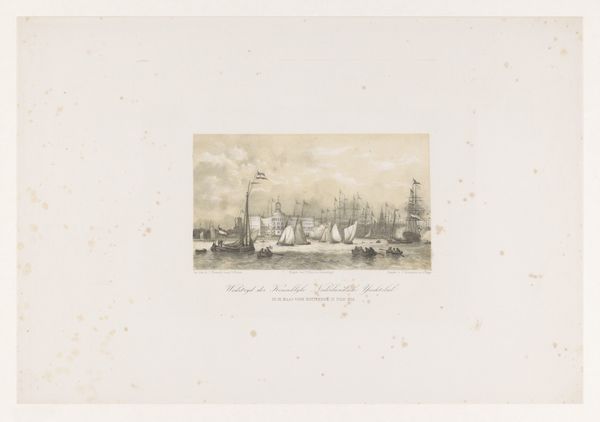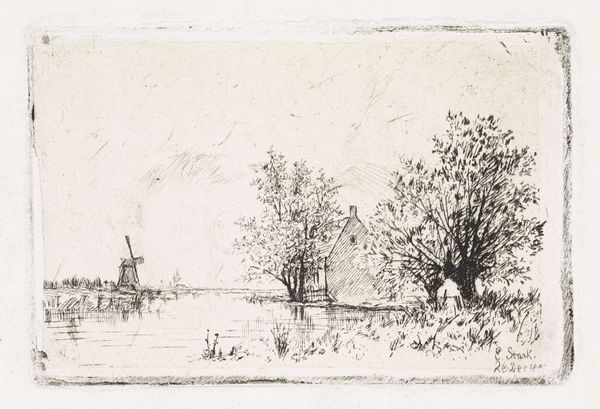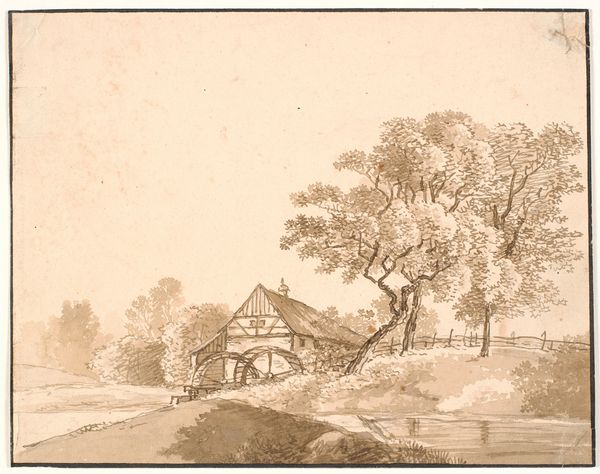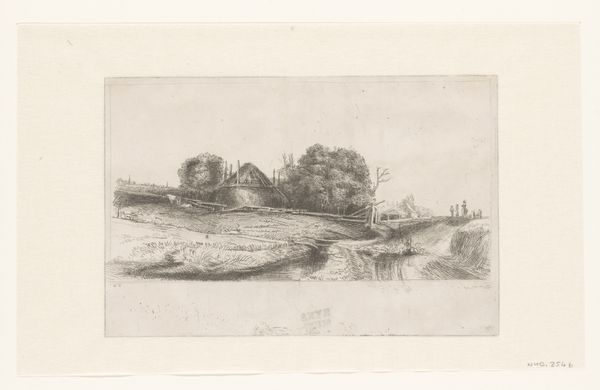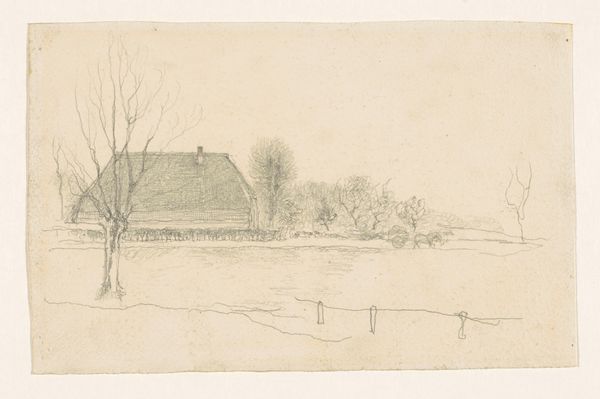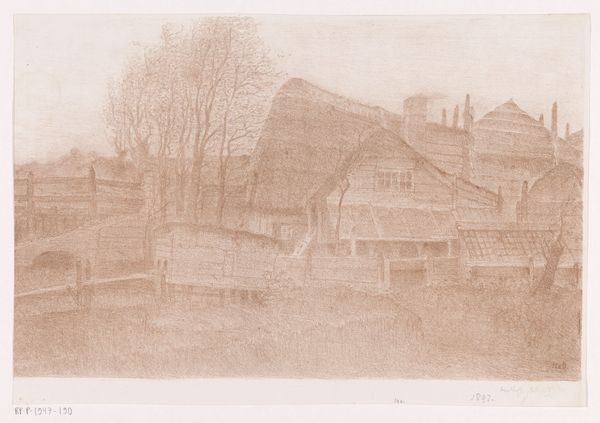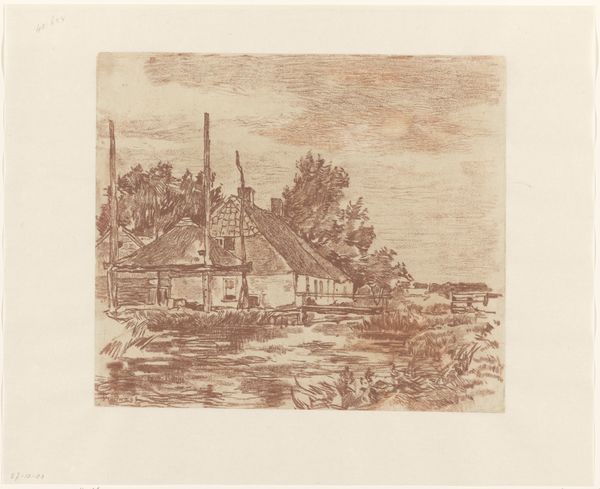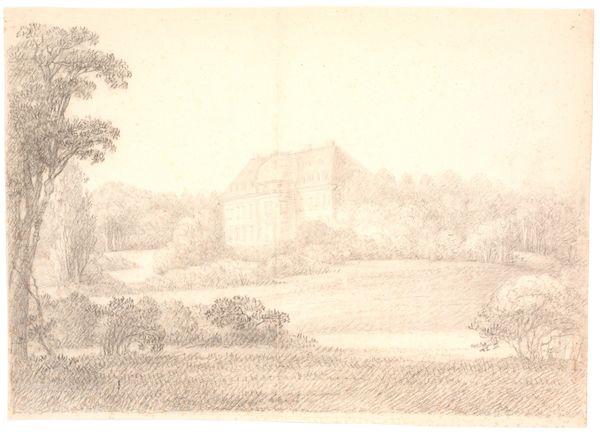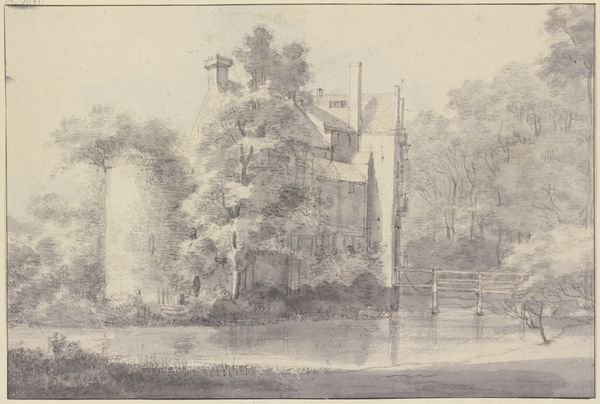
print, etching, paper
#
water colours
#
dutch-golden-age
# print
#
etching
#
landscape
#
paper
#
realism
Dimensions: height 79 mm, width 119 mm
Copyright: Rijks Museum: Open Domain
Editor: This etching, "Huis aan het water in Oude Wetering," created in 1901 by Wijnand Otto Jan Nieuwenkamp, it's rendered on paper using a monochromatic print, the scene presents a house by the water. I find the muted palette and delicate lines to be quite serene. How do you interpret this work? Curator: Its tranquility indeed stems from the artist's meticulous use of line and form. Observe the dominance of horizontal lines, particularly in the depiction of the water and the house’s foundation; this is carefully contrasted by the verticality of the trees and masts. Notice how the density of etched lines varies, creating a subtle play of light and shadow, which contributes to the atmospheric depth. What effect do you think the limited tonal range has on the overall composition? Editor: I'd say it contributes to the peaceful mood, by keeping the contrast subtle, it emphasizes the flatness of the Dutch landscape? Curator: Precisely. The composition invites us to focus on the relationship between the structural elements within the landscape. The house isn’t simply *in* the landscape, but seems to be *of* it, doesn't it? Note how Nieuwenkamp has achieved a harmonious balance between architectural form and organic growth, primarily using tone and line to convey spatial relationships. Editor: That’s a great observation about the horizontal lines. It made me view the relationship between objects and structures of different sizes. It does add a certain sense of scale. Curator: Understanding these artistic choices provides a lens through which we may observe and engage in critical dialogue on various works of art in similar styles, wouldn't you agree?
Comments
No comments
Be the first to comment and join the conversation on the ultimate creative platform.
